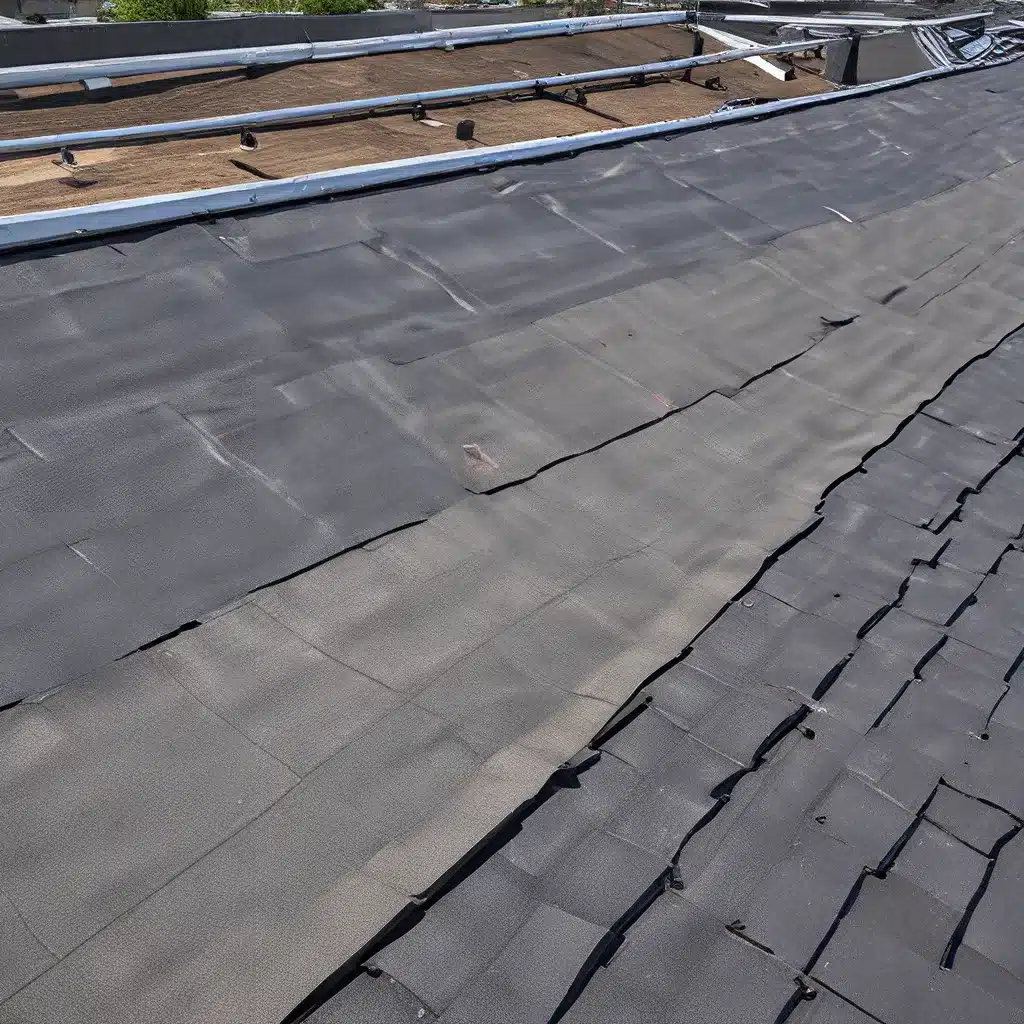
As a business owner or facility manager, I know firsthand the importance of maintaining a well-functioning and energy-efficient commercial property. After all, our buildings are the backbone of our operations, and ensuring they’re running at peak performance is crucial for the bottom line and the environment. That’s why I’m excited to dive into the topic of sustainable roofing – a game-changer in the world of commercial construction.
The Roof’s Pivotal Role in Energy Efficiency
Let’s be honest, the roof is often an afterthought when it comes to building design and upgrades. But the truth is, it’s a critical component in keeping our commercial spaces comfortable, energy-efficient, and environmentally friendly. Traditional roofing materials like asphalt shingles and metal sheets can contribute to environmental degradation through their production processes and lack of recyclability.
Green roofs, on the other hand, are living, breathing oases that can significantly reduce a building’s energy demands. These roofs incorporate vegetation and soil layers, acting as natural insulation and lowering the need for air conditioning. By optimizing thermal performance, sustainable roofing solutions help commercial properties slash their energy consumption and mitigate greenhouse gas emissions.
Durability and Longevity: A Worthy Investment
One of the biggest benefits of sustainable roofing is its durability and longevity. Options like recycled rubber shingles, metal roofing, and clay tiles are engineered to withstand the elements and have extended lifespans compared to their traditional counterparts. This means fewer maintenance hassles, reduced replacement costs, and a smaller environmental footprint from frequent material disposal and manufacturing.
Metal roofing, for instance, can last up to 50 years with proper care, outlasting asphalt shingles by a significant margin. And when it’s time to replace, many sustainable roofing materials can be recycled or repurposed, aligning with the principles of a circular economy.
Stormwater Management: Tackling Urban Runoff
Another critical aspect of sustainable roofing is its ability to address the challenge of stormwater management. Commercial properties often struggle with the impact of runoff, which can contribute to urban flooding and water pollution. But green roofs and permeable surfaces offer a natural solution, absorbing and slowly releasing rainwater, reducing the strain on drainage systems and replenishing groundwater supplies.
Recyclability and Environmental Impact
Sustainability isn’t just about energy efficiency; it’s also about minimizing the overall environmental impact of our buildings. Many sustainable roofing options are designed with recyclability in mind, allowing materials like metal and plastic to be repurposed at the end of their lifespan. This not only diverts waste from landfills but also conserves precious natural resources, aligning with the principles of a circular economy.
Innovative Sustainable Roofing Options
The world of sustainable roofing is rapidly evolving, with a range of innovative solutions that are revolutionizing the commercial construction industry. Let’s take a closer look at some of the game-changers:
Photovoltaic (PV) Solar Roofing: These systems integrate solar panels directly into the roof structure, harnessing renewable energy to power commercial properties and reduce reliance on the grid.
Cool Roof Coatings: These reflective materials applied to existing roofs improve solar reflectance and thermal emittance, enhancing indoor comfort and decreasing cooling loads.
Living Roofs: Also known as green roofs, these incorporate vegetation layers that provide insulation, absorb rainwater, and mitigate urban heat island effects, promoting biodiversity and air quality.
Recycled Content Roofing: Options like recycled rubber shingles, plastic shingles, and composite tiles repurpose post-consumer waste, diverting plastics and tires from landfills and reducing environmental impact.
Quantifying the Benefits: Case Studies and Success Stories
Seeing the real-world impact of sustainable roofing can be truly inspiring. For instance, a case study in Kansas City, Missouri found that the over 700,000 square feet of green roofs installed between 1999 and 2020 resulted in avoided emissions of 384 pounds of nitrogen oxide, 734 pounds of sulfur dioxide, and 269 tons of carbon dioxide in 2020 alone. That’s the equivalent of $3.5 to $0.5 million in monetized health benefits!
Hearing directly from building owners and facility managers about their experiences with sustainable roofing can also provide powerful insights. Testimonials about the energy savings, improved indoor air quality, and enhanced aesthetics can inspire others to embrace similar initiatives.
Driving Innovation Through Collaboration
Addressing the complexities of sustainable roofing requires an interdisciplinary approach, bringing together experts from architecture, engineering, materials science, and beyond. By fostering collaborative partnerships and integrating design strategies, we can unlock synergies and co-create solutions that maximize environmental, social, and economic value.
Educating the Next Generation of Sustainable Builders
As the demand for eco-friendly construction practices grows, it’s crucial that we invest in workforce development and continuous education. Equipping architects, engineers, contractors, and facility managers with the knowledge and skills to implement sustainable roofing strategies is key to driving industry-wide change.
By organizing conferences, workshops, and online training platforms, we can empower professionals to stay at the forefront of innovation and ensure that sustainable roofing becomes the new industry standard.
Embracing the Future of Sustainable Roofing
As I reflect on the journey of sustainable roofing, I’m struck by the incredible advancements and the immense potential that lies ahead. From self-healing membranes and nanotechnology-enhanced coatings to advanced vegetative systems, the future of commercial roofing is brimming with possibilities.
By embracing sustainable roofing solutions, we’re not only enhancing the efficiency and resilience of our buildings but also contributing to a greener, more sustainable future. It’s an investment in the long-term health of our communities, our planet, and the generations to come.
So, whether you’re a business owner, a facilities manager, or simply someone passionate about environmental stewardship, I encourage you to explore the transformative power of sustainable roofing. It’s a journey worth embarking on, and the rewards – both tangible and intangible – are truly remarkable.